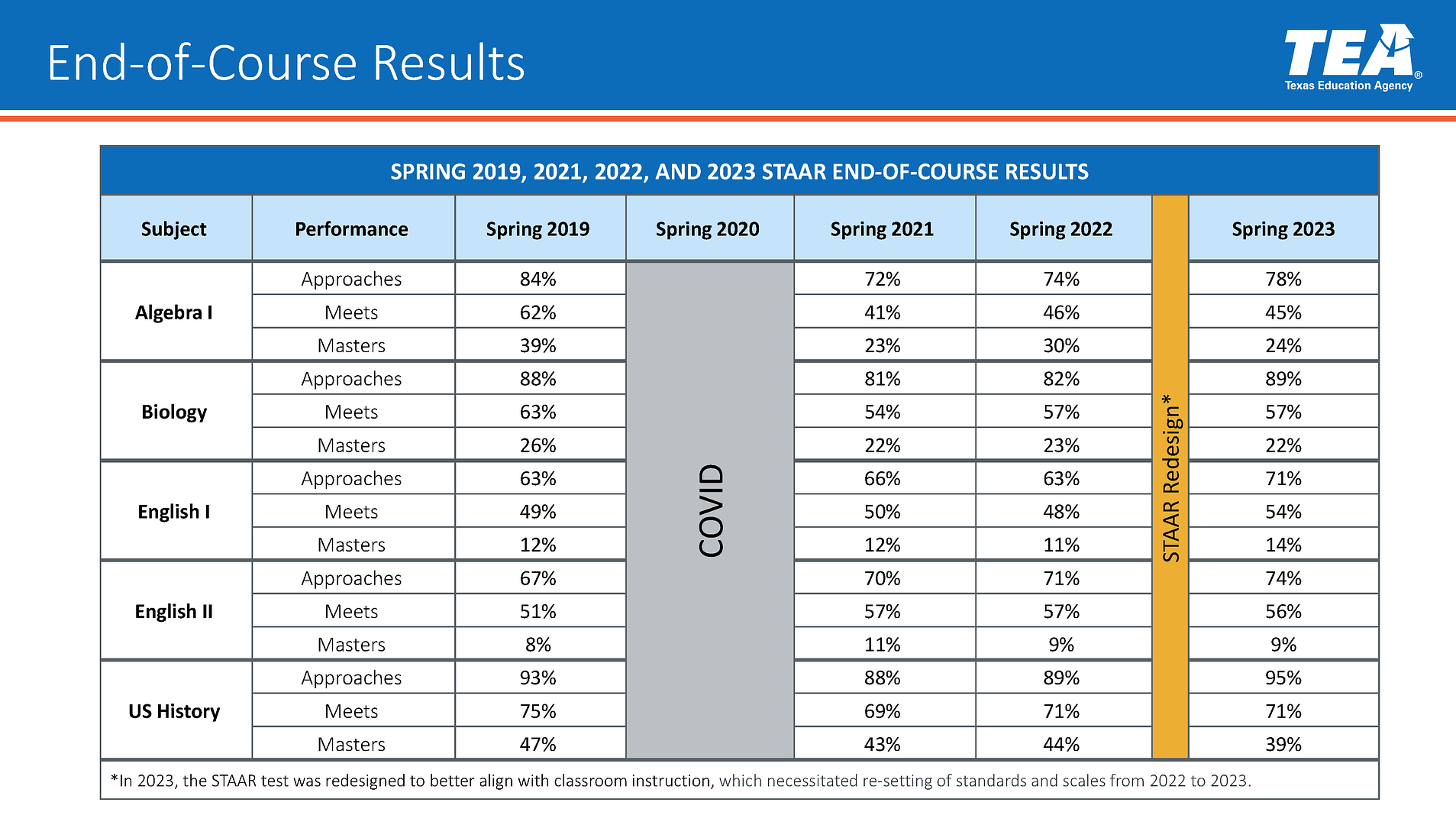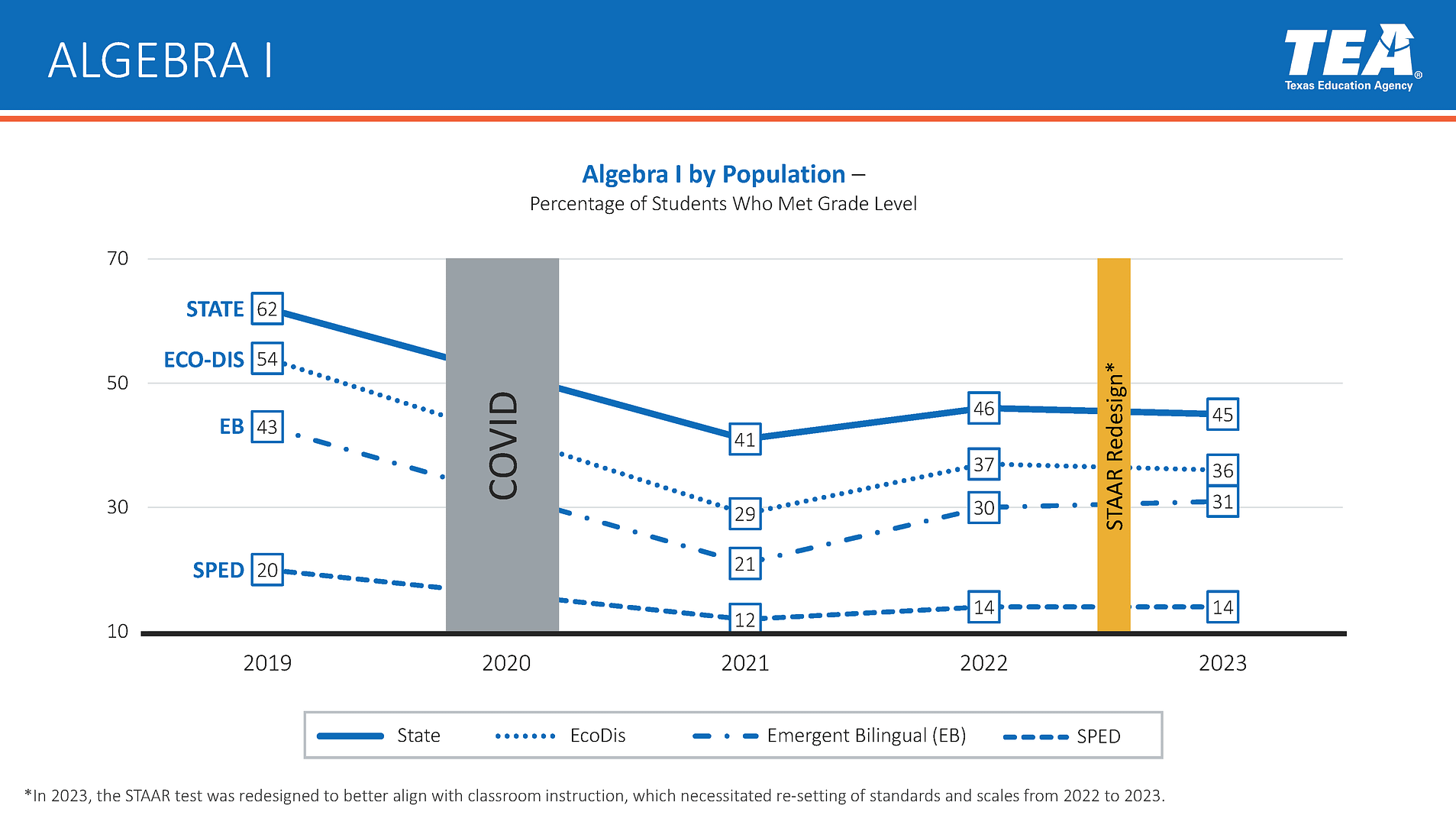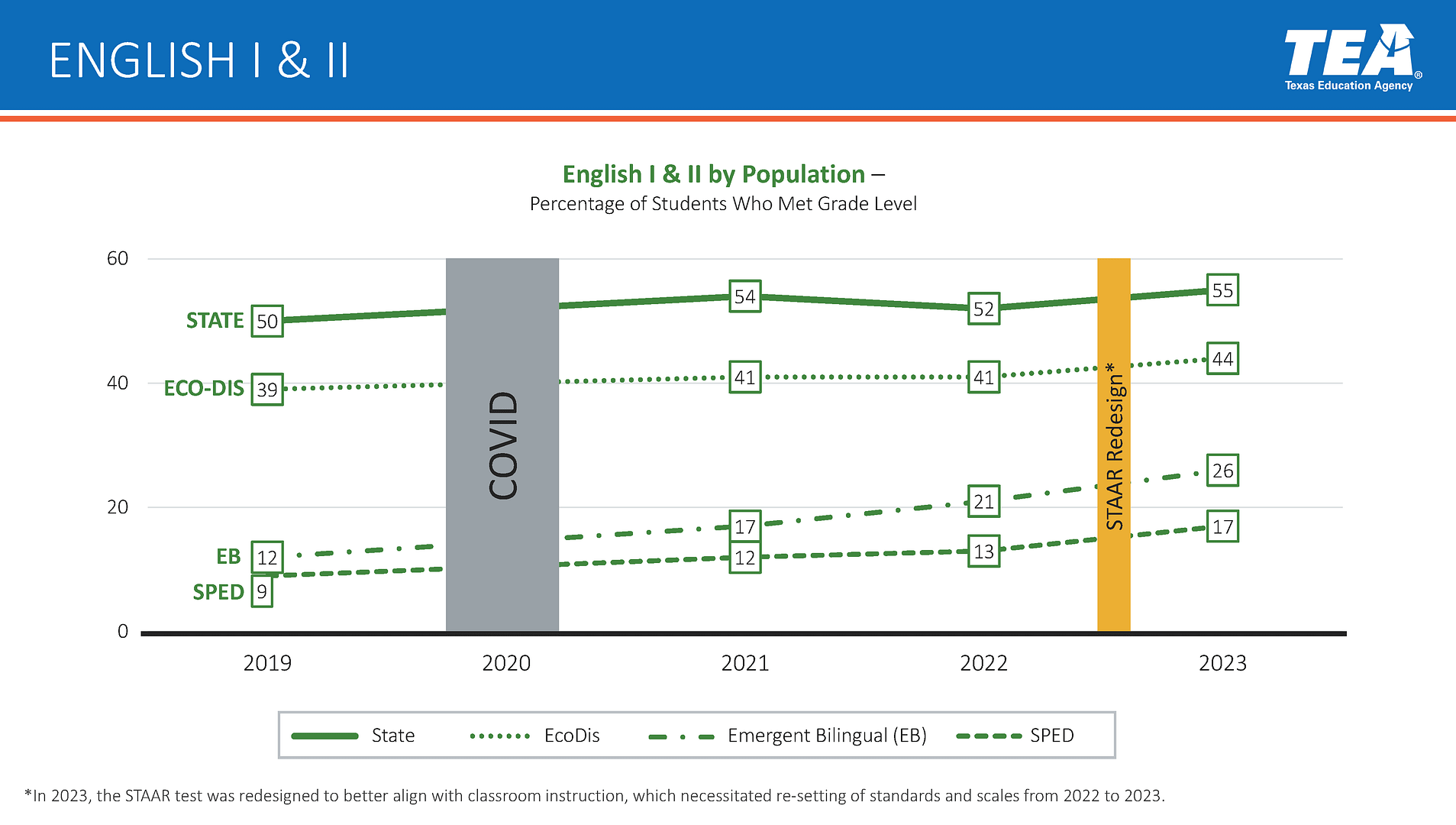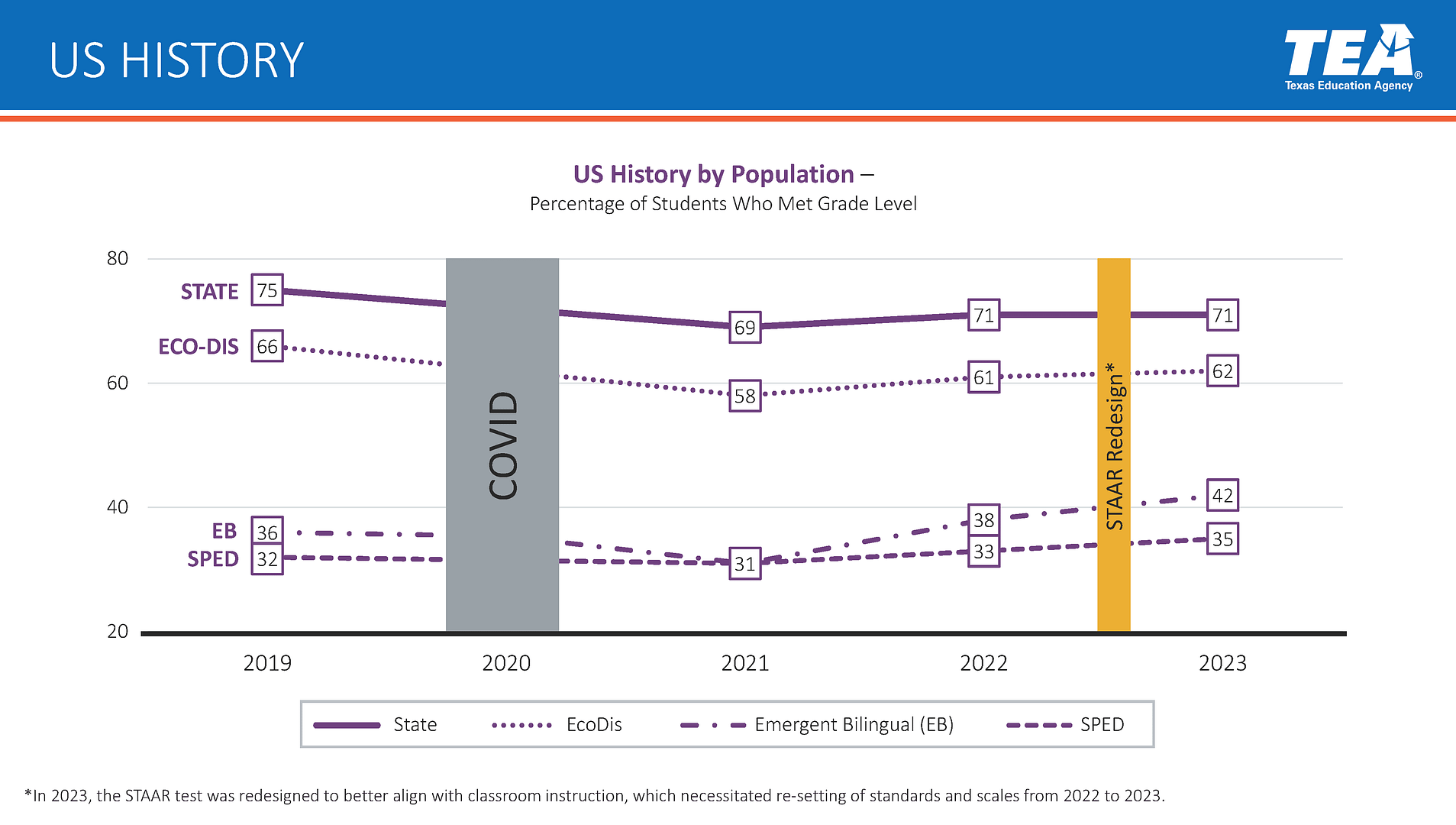Aiming for mastery: Where to focus on student testing
Late last week, the Texas Education Agency released this spring’s high school end-of-course exam scores. While many have praised the increase in “passing” rates, underneath this positive trend is something concerning, and potentially lingering, for policymakers to address: the rate that students actually meet or master grade level expectations is not recovering quickly in math, science, or history. This trend, which will require additional analysis to fully understand, suggests that schools are having success at improving the outcomes at the low end, but also that our highest-performing students are facing hurdles to achieving their full potential in a post-pandemic world.
While math, science and history each tell concerning stories, which will be discussed below, there is one all-around positive: English scores — both English 1 and English 2 — are higher than pre-pandemic levels across all three tiers of approaches, meets and masters.
 Credit: TEA
Credit: TEA
This past year, the STAAR test underwent a redesign that changed elements of the exam, including increasing the number of open-ended questions and moving the test to an online format. This redesign prompted some concern from teachers and school administrators who feared that this switch to online testing would be inequitable and lead to a drop in passage rate. The EOC data reveals no such drop. Passage rates increased across all subjects from the Spring 2022 results.
What is “Passing” STAAR?
To pass the end-of-course exam, a student only needs to achieve the “approaching” standard, which is actually below grade level expectations. So, while passing rates are up — and the number of students approaching grade level has increased — it’s important to caveat this positive trend with a recognition that “passing” doesn’t actually mean the students are meeting grade level expectations. This is one of many areas where the state’s accountability system has expectations lower than many in the public might expect and why persistent efforts to further water down our accountability system are misguided. Even at this lower passing standard, more than a quarter of students can’t even approach grade level in Algebra or English.
For context, a third of students passed their Algebra 1 test but are still not considered on grade level, only “approaching.” The same is true for 17% and 18% of English 1 & 2 students, respectively. House Bill 1416, passed this legislative session, ensures that the thousands of students who score “does not meet” grade level expectations are entitled to high-impact tutoring, building on the efforts of HB 4545 (87R). The increased passage rates are likely, in part, due to students receiving this type of support and intervention. The service provided by HB 1416, however, does not apply to students classified as “approaching” grade level expectations, the same students that TEA says need targeted academic intervention to be successful in the next grade.
For a holistic view of academic proficiency and achievement, we have to not only look at the percentage of students who passed the test, but the percentage of students who met grade level expectations and those that mastered them.
Algebra 1
Students across the nation have struggled to recover math proficiency since COVID. This new Algebra 1 EOC data reinforces a worrying trend: students are not recovering in math. While more students passed the Algebra 1 EOC, only 45% of students are actually on grade level, a drop of one point from last year and 17 points below pre-pandemic levels. The highest performers drop by six points, 15 points compared to pre-pandemic levels. This is a similar trend seen nationally post-pandemic on the National Assessment of Educational Progress. This post-pandemic decline should worry lawmakers and stakeholders, drawing attention to the importance of initiatives like Senate Bill 2124 (88-R), which will increase access to advanced math pathways in middle school.
Credit: TEA
English 1 & 2
In Texas, reading scores saw impressive recovery in the elementary grade after COVID, reaching record highs. This remained true for high school English performance. The percentage of students on grade level in high school is above pre-pandemic levels. The brightest spot is emergent bilingual students who have increased grade level proficiency by 14 points since before the pandemic, more than doubling the number of students meeting grade level expectations. While we have seen growth in passage rates and students on grade level, only 55% of students testing on grade level in English in high school is a sobering statistic.
Credit: TEA
U.S. History
U.S. History is the most passed EOC exam with 95% of students passing their EOC, but the rate of students meeting grade level expectations is still down 4% from pre-pandemic levels and the rate of mastery has declined eight percentage points. Students receiving special education services, emergent bilingual students and economically disadvantaged students all saw improvement while the state average remained unchanged at 71% of students testing on grade level. Continued declines post-pandemic for the high-achieving students, when performance should theoretically increase, should alarm policymakers.
Credit: TEA
Biology
The passage rate for the biology test of 89% has exceeded pre-pandemic levels, but the percentage of students at grade level remained unchanged at 57% of students, six points below pre-pandemic levels. Students receiving special education services and emergent bilingual students saw slight increases in grade level performance while the percentage of students mastering the content slightly decreased.
Credit: TEA
Read more:
- Reading, math scores continue post-pandemic drop
- State representatives debate reducing focus on academic preparedness in public schools
- Texas 2036’s biggest education issues this legislative session
Love this blog? Support our work.




